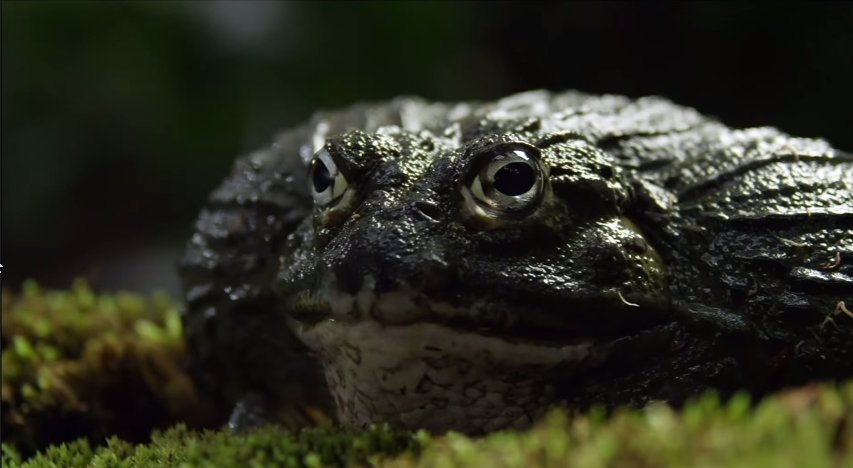For African bullfrogs, it’s the males that take responsibility for parenting. The bullfrogs wait to breed until after heavy rainfall. In the shallows of the temporary ponds and puddles left behind is where the bullfrogs will deposit their eggs. Once hatched, the male bullfrogs will watch over their brood until the tadpoles metamorphose. The males don’t only defend their offspring from predators, they also defend them from being stranded without water. If their small pond begins to dry up, the male bullfrog will work quickly to dig a pathway to another water source.
While this may indeed be a great show of fatherly dedication, the male bullfrog isn’t completely benevolent to his progeny. Because he must stay with the tadpoles at all times in order to protect them, he will feed on them to sustain himself. Fortunately, the tadpoles are born in very large numbers (as many as a few thousand), so many will survive despite their father’s predation and the cannibalism that takes place among the young themselves.1
The fact that male bullfrogs save their tadpoles may not be impressive when you consider the extensive level of care many mammalian species show their young, but it’s quite noteworthy for an amphibian. Reptiles and amphibians in general aren’t well known for displaying parenting behaviors: most of the time, the offspring are on their own after birth. However, there are some cases of parental care by reptiles and amphibians, and scientists are continuing to discover new instances of one or both parents looking after their young.
The video below by Nature on PBS features David Attenborough narrating incredible footage of a male digging to save his offspring from a rapidly drying puddle.
This article was written by Amanda Pachniewska, founder & editor of AnimalCognition.org
Sources
1 – African Bullfrog
WAZA: World Association of Zoos and Aquariums
http://www.waza.org/en/zoo/choose-a-species/amphibians/frogs-and-toads/pyxicephalus-adspersus


